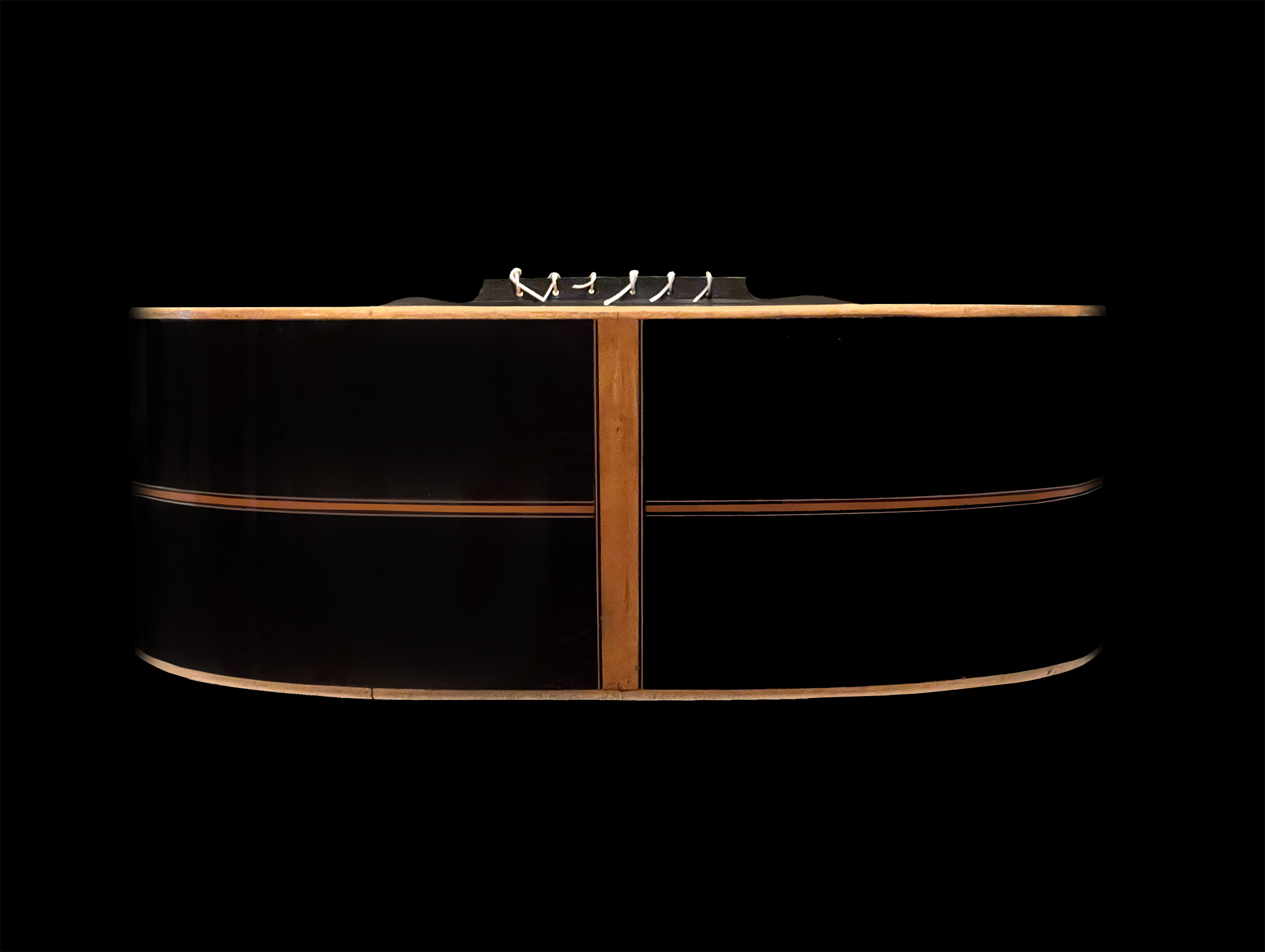Born Jean Babtiste Coupa in 1808, John Coupa was a guitarist and teacher working in Boston during the 1830s. He advertised as a professor of the “Spanish Guitar” and “French and Italian languages.” A concert program from March 25, 1830, lists him playing a guitar solo between a vocalist accompanied on piano and a work for full chorus. Potpourri concerts, featuring soloists and various ensembles on the same program, were the norm before the advent of the solo recital in the decade that followed. Coupa also published a guitar method, “Instruction Book for Guitar” in or around 1835.
| Specifications | |
| Date | c. 1842 |
| Location | Pennsylvania, USA |
| Length of Guitar | 914mm |
| String Length | 623mm |
| Upper Bout Width | 213mm |
| Waist Width | 174mm |
| Lower Bout Width | 290mm |
| Side Depth at Waist | 95mm |
| Soundboard: Spruce | Back: Brazilian rosewood| Sides: Brazilian rosewood| Details: Deeper body with tie bridge in the Spanish style. | |


A short time later, Coupa relocated to New York City where he opened a studio at 385 Broadway in Lower Manhattan. He soon established himself as a successful teacher and performer, appearing in concert alongside such guitar luminaries as Joseph Benedid, Madame de Goni, and Philip Ernst.
He began purchasing Martin guitars for resale to his students as early as 1837 and as his business relationship with C.F. Martin grew, he later became Martin’s primary sales representative in New York City, following Martin’s departure to Cherry Hill, Pennsylvania in 1839. Throughout the 1840s until his death in 1850, Coupa marketed Martin-made guitars under the Martin & Coupa label.
Coupa’s influence and endorsement during the decade of the 1840s helped sway Martin to transition away from the Stauffer-style instruments of the Viennese School to guitars more similar to the Spanish makers of Cadíz. This interplay secured Coupa’s position as a pivotal figure in Martin guitar history.
The c. 1842 Martin & Coupa in the Austin-Marie Collection is representative of Martin’s stylistic transformation. The neck is dovetailed into the body and the soundboard is supported by five fan braces versus the ladder bracing used in Viennese guitars. Gone is the Stauffer scroll-shaped headstock – now replaced by a slotted head. The Spanish influence is clearly evident in the deeper body, the asymmetry of the upper and lower bouts, the Brazilian rosewood back and sides, and the rectangular tie bridge. This guitar is in remarkably good condition and represents a watershed period in Martin guitar development.